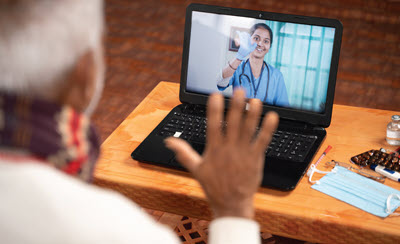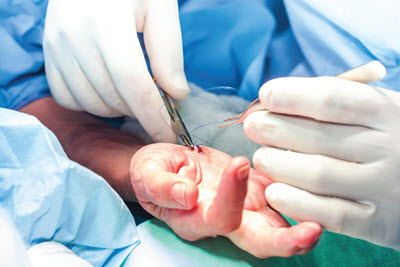Clean Up Your Vasectomy Coding Claims
Use these coding hints to snip through any confusion. Coders working with urologists or general surgeons may regularly come across claims for vasectomies. Make sure you don’t become complacent in your coding — stay vigilant in your documentation and coding efforts. Rely on these six key tips to capture and report the crucial components of a vasectomy procedure. 1. Check that the payer will cover the procedure. In the past, many payers didn’t reimburse for voluntary sterilization, treating it as an elective procedure. Don’t presume that is still the case. You should make sure your patient verifies the procedure will be covered by their insurance or Medicare before performing the surgery. Keep in mind: Medicare only pays for services it considers to be medically necessary. It never pays for elective procedures, including both vasectomies and vasectomy reversals. This rule applies to all sterilization procedures unless the procedure is being used to treat an underlying medical condition. Also be sure all necessary forms are on file prior to surgery. For example, “The Department of Health and Human Services [HHS] has a national policy with state-funded Medicaid plans that requires a consent for sterilization be in the medical record prior to a vasectomy,” says John Piaskowski, CPC-I, CPMA, CUC, CRC, CGSC, CGIC, CCC, CIRCC, CCVTC, COSC, specialty medicine auditor at Capital Health in Trenton, New Jersey, and AAPC consultant and committee chair. 2. Determine whether payer considers the first visit a consultation. The first time a patient visits your office regarding a possible vasectomy, the urologist will discuss the procedure with them (and possibly their spouse or significant other). The urologist will fully examine the patient, explain all aspects of the surgery, and answer any questions they might have. Coding tip: Check with the involved payer before assigning a code for this initial visit. Some insurers require a consultation code such as 99242-99245 (Office or other outpatient consultation for a new or established patient, which requires a medically appropriate history and/or examination). Others will ask for the appropriate office visit code from 99202-99205 (Office or other outpatient visit for the evaluation and management of a new patient, which requires a medically appropriate history and/or examination) for a new patient, or 99212-99215 (Office or other outpatient visit for the evaluation and management of an established patient, which requires a medically appropriate history and/or examination) for an established one. “I would recommend staying away from billing consultation codes and using new patient or established patient codes instead,” says Melanie Scott, CPC, CRHC, CPPM, CMPE, director of operations at Five Valleys Urology in Missoula, Montana. “To bill a consultation, for insurances that still cover consultation codes, requires that the patient was referred by another provider and that the new provider render an opinion and report back to the referring provider. In most vasectomy cases, you will deal with a self-referral and there is no need to report back to a referring physician,” says Scott. 3. Be choosy about the diagnosis code. Your diagnosis code will also hinge on the patient’s status. You’ll use Z30.2 (Encounter for sterilization) most of the time, and when instructed by a particular carrier, Z30.09 (Encounter for other general counseling and advice on contraception) as your diagnosis. You’ll assign the diagnosis code based on whether the patient has decided to proceed with the surgery or whether they are uncertain. Code Z30.2 is appropriate for confirmed surgery; Z30.09 applies when the patient is unsure they want to have the vasectomy during discussion at the preoperative visit. “It is helpful to note that despite being a ‘Z’ code, it is acceptable as a primary diagnosis code per ICD-10-CM,” says Piaskowski. 4. Confirm whether procedure is open or laparoscopic. When reporting the vasectomy procedure, you have two possible options: For a standard vasectomy or the new “no scalpel” technique vasectomy, report 55250. Technically, there is no specific CPT® code for laparoscopic vasectomy. However, when your urologist performs this procedure, (most often at the same time as a general surgeon is performing a laparoscopic hernia repair), report the unlisted code 55559 for the vasectomy. “If you are coding for a laparoscopic vasectomy using the unlisted code 55559, keep in mind that certain payers have guidelines and requirements regarding documentation submission and claim line notes. CMS [Centers for Medicare & Medicaid Services] prefers that unlisted codes have a claim line note that briefly describes the service, such as ‘laparoscopic vasectomy’,” says Piaskowski. Coding note: Usually, the urologist will perform a vasectomy for voluntary sterilization on both sides, but you won’t append a bilateral modifier to 55250. The code may be used for unilateral or bilateral procedures, as the descriptor indicates. Additionally, the use of local or regional anesthesia administered by the operating surgeon is included in the code and is not separately billable or payable. For either type of approach, you will still submit diagnosis Z30.2. 5. Include surgical supplies and trays. When finalizing the claim, remember to report the surgical tray and supplies. Note: Medicare Part D never pays for surgical trays or supplies. You should, however, still include the tray on your claim for documentation purposes, for Medicare and for any secondary payer (which might pay for trays/supplies). Code it: Submit HCPCS code A4550 (Surgical trays) or CPT® code 99070 (Supplies and materials (except spectacles), provided by the physician or other qualified health care professional over and above those usually included with the office visit or other services rendered (list drugs, trays, supplies, or materials provided)) for private or commercial carriers, a few of which may reimburse for a surgical tray/supplies. 6. Don’t forget to code semen analysis. After a vasectomy, the urologist will conduct a series of follow-up tests to confirm the absence of sperm. This involves examining the patient’s semen to ensure the success of the procedure. Any work associated with these follow-up exams will already be included in the surgical code. Always document the service, but do not file a claim for it. For example, code 55250 includes the semen analysis. If using outside labs: “If your office performs laboratory evaluations of the patient’s samples, these examinations are included in the vasectomy CPT® code. However, if your office does not have Clinical Laboratory Improvement Amendments (CLIA) certification that allows you to perform the semen analysis, the semen samples must be sent to an outside laboratory. The lab will bill the patient separately for these tests,” says Stephanie Storck, CPC, CPMA, CUC, CCS-P, ACS-UR, longtime urology coding expert and consultant in Glen Burnie, Maryland.




